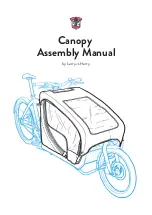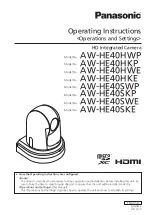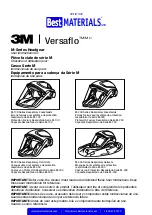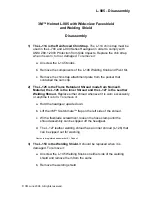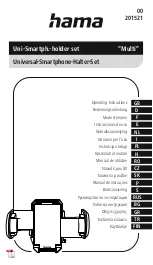
6
- 24
2WAY SYSTEM
Trouble Diagnosis
6
4. 2WAY Alarm Codes
P03, P17, P18 Alarm
2WAY SYSTEM
Trouble Diagnosis
4. 2WAY Alarm Codes
Alarm code
P03, P17, P18
Alarm meaning
P03 : Compressor 1 discharge temperature trouble
P18 : Compressor 3 discharge temperature trouble
Alarm conditions
Compressor 1 : Pre-trip stops when the temperature exceeds 106°C.
Compressor 3 : Pre-trip stops when the temperature exceeds 106°C.
* The alarm occurs when pre-trip stop occurs more than once. However the pre-trip counter is cleared
if the compressor operates continuously for a specified length of time (more than 2.5 minuites).
Probable cause
(1) Malfunction of expansion valve (MOV4)
(2)
(9) Electrical noise
Insufficient amount of refrigerant
(including trouble resulting from an insufficient initial charge and from gas leakage)
(3) Blocking of low-pressure parts caused by intrusion of foreign objects (moisture, scale, etc.)
(4) Malfunction of expansion valves (MOV1, MOV2)
(5) Refrigerant is accumulated into the stopped outdoor units.
(6) Compressor discharge sensor failure
(7) Outdoor unit PCB failure
(8) Failure to open the service valve of the outdoor unit
Check
(1) Malfunction of expansion valve (MOV4)
Trouble: Although the expansion valve (MOV4) opens (MOV4 does not indicate "0" on the monitoring
software), the discharge temperature of the said compressor does not decrease.
Check:
Check:
Check whether the MOV4 secondary side refrigerant tube is cold when the expansion valve
(MOV4) opens.
(2) Insufficient refrigerant
Trouble:Liquid effectiveness is poor.
Check whether or not the superheating temperature is declining if the expansion valves
(MOV1, MOV2) are opened to 300 pulses or more (after checking for foreign object
intrusion).
(3) Refrigerant is accumulated into the stopped outdoor units.
Trouble: System is OK when all outdoor units are operating, however symptoms of insufficient gas
occur when a certain outdoor unit is stopped.
Condensation or frost is visible up to the top of the accumulator of the stopped outdoor unit.
After an outdoor unit stops, there is the sound of refrigerant flowing into an outdoor unit
that was stopped for a long time.
When an outdoor unit starts after being stopped for a long time, the start is accompanied
by much vibration.
Check:
Check:
•
•
•
•
•
•
Check the following points limited to the stopped outdoor units (while the other outdoor
units are operating).
Refrigerant leak on the expansion valves (MOV1, MOV2, MOV4)
•
Refrigerant leaks from the expansion valve (MOV1, MOV2) and check valve connected
in apposition (check valves for 14HP ~ 20HP)
•
The sound of refrigerant flow can be heard when refrigerant leaks.
•
refrigerant leaks, the sound of refrigerant flowing from the check valve can be heard.
•
When the outdoor units stopped, there is no refrigerant flow normally. But once
Close the liquid tube service valve (normally "open") and check whether the sound of
refrigerant flow from the check valve stops. When the sound stops, refrigerant leaks.
•
refrigerant flow can be heard. When the sound stops, refrigerant leaks.
•
The expansion valve of the outdoor units stopped are all closed without any sound.
Close the liquid service valve (normally “open”) and check whether the sound of
If refrigerant leaks from the expansion valve (MOV4), the temperature of the secondary
refrigerant tube becomes lower than the outdoor temperature.
(4) Sensor failure
This alarm is likely to occur when wiring is partially cut. (It is difficult to identify, even
when continuity is checked.) The detected discharge temperature is high.
•
•
Although such conditions rarely occur, a P02 alarm is likely if the detected discharge
temperature is low.
Replace the sensor with another discharge sensor and compare the temperature conditions.
(5) Failure to open the service valve of the outdoor unit
Check open/closed status of the outdoor unit service valve.
(6) If the cause is still unknown after checking the above, there is possibility that electrical noise is the
cause of the trouble.
Correction
(1) Replace the sensor.
(2) Replace the outdoor unit PCB.
(3) Correct the problem locations.
Example
All of the probable causes
Compressor 2 : Pre-trip stops when the temperature exceeds 106°C.
P17 : Compressor 2 discharge temperature trouble
3WAY SYSTEM
Trouble Diagnosis
4. 3WAY Alarm Codes
P04 Alarm
Alarm code
P04
Alarm meaning
High-pressure switch activated.
Alarm conditions
The operation of the electronic circuit in the high-pressure switch may short-circuit the terminal
depending on the pressure. A pressure of 3.8 MPa or above will short-circuit the terminal. Once
the terminal is short-circuited, it will remain in that state until the pressure goes below 3.15 MPa.
Probable cause
(1)
(3)
(2)
(4)
(5)
(6)
(7)
(8)
(9)
High-pressure switch failure or wiring connection failure
Difference of characteristics of high-pressure sensor
Failure to open the service valve of the outdoor unit
Clogging of the outdoor heat exchanger during cooling
Air short circuit occurs during cooling.
Failure of the outdoor fan during cooling
Clogging of the air filter in the indoor unit during heating
Air short circuit occurs during heating.
Failure of the indoor fan during heating
(10)
(11)
(12)
(13)
(14)
(15)
Clogging of the refrigerant circuit
Failure of the expansion valve
Failure of the solenoid valve kit
Too much refrigerant has been charged.
The wiring from the solenoid valve kit is actually connected to the different indoor unit.
The system is that the multiple indoor units are connected at only one solenoid valve kit and also
multiple remote controllers are connected. "Installation of the common use solenoid valve kit"
from a PC has not been made.
Check
(1)
(2)
(3)
High-pressure switch failure or wiring connection failure
Failure to open the service valve of the outdoor unit.
Difference of characteristics of high-pressure sensor
Connect a gauge to the high-pressure outlet and check for changes in the value disp
l
ayed by the
monitoring software, and for large deviation of the gauge pressure.
(5) During cooling, check whether an air short blockage has occurred in the outdoor unit. The system is
(4) During cooling, check whether the outdoor unit heat exchanger is clogged. Remove any foreign
material that prevents ventilation.
operating normally unless the temperature around the outdoor unit is excessively high.
(6) During cooling, check for outdoor fan failure. Check whether the screws securing the fan are loose
and whether the fan connector in the outdoor unit PCB is properly connected.
(7) During heating, check whether the air filters in the indoor unit are clogged. If clogged, clean the
filters.
(8) During heating, check whether an air short blockage has occurred in the indoor unit. The system
operates normally unless the temperature around the indoor unit is excessively high.
(9) During heating, check for indoor fan failure.
(10) Check whether the refrigerant circuit is clogged. Check that all service valves are closed.
Check whether welded locations are clogged.
(11) Check for expansion valve failure. Check whether the expansion valves make a clattering sound
when the power is reset. Since the expansion valve in the indoor unit is in a location that makes
aural inspection difficult, use an electric means to check. Check that the connector pin of the
expansion valve on the PCB outputs 4 V. In addition, check that the coil resistance of the
expansion valve is several tens of Ohm ( ).
(12) Check for solenoid valve kit failure. Removing a coil that is on will result in a clicking sound.
Also, removing a coil that is off will not produce such a sound.
(13) Check whether too much refrigerant has been charged. Too much refrigerant has been
charged if the sub-cool temperature of the condenser is 15°C or more.
(14)
unit .
(15)
Check whether the wiring from the solenoid valve kit is actually connected to the different indoor
The system is that the multiple indoor units are connected at only one solenoid valve kit and also
multiple remote controllers are connected. Check whether "installation of the common use solenoid
valve kit" from a PC has been made. (Confirmation from the address setting software of a PC)
Correction
Replace damaged components and correct the amount of charged refrigerant.
P05 Alarm
Alarm code
P05
Alarm meaning
Reverse phase (or missing phase) detected
Alarm conditions
This alarm occurs when a reverse phase or missing phase is detected in the L1-L2-L3
-N
phases.
Probable cause
Reverse phase or missing phase in the L1-L2-L3
-N
phases
Check
Check the wiring at the power terminal board.
Correction
Switch the phases and reinsert. Check if the result is OK.
•
Check under the section 6. "Inspection of Parts (1) High-pressure switch".
•
Check whether the socket of the high-pressure switch is surely inserted into the outdoor unit PCB.
•
•
Check open/closed status of the outdoor unit service valve.
SM830228-00̲3WAY ECO-i SYSTEM.in23 23
2013/03/16 18:25:23
SM830204-05_2WAY SYS.indb 24
2015/01/20 17:45:21
Содержание U-20ME1E81
Страница 54: ... MEMO 1 46 ...
Страница 102: ... MEMO 3 36 ...
Страница 116: ... MEMO 4 14 ...
Страница 177: ...201502 ...




























